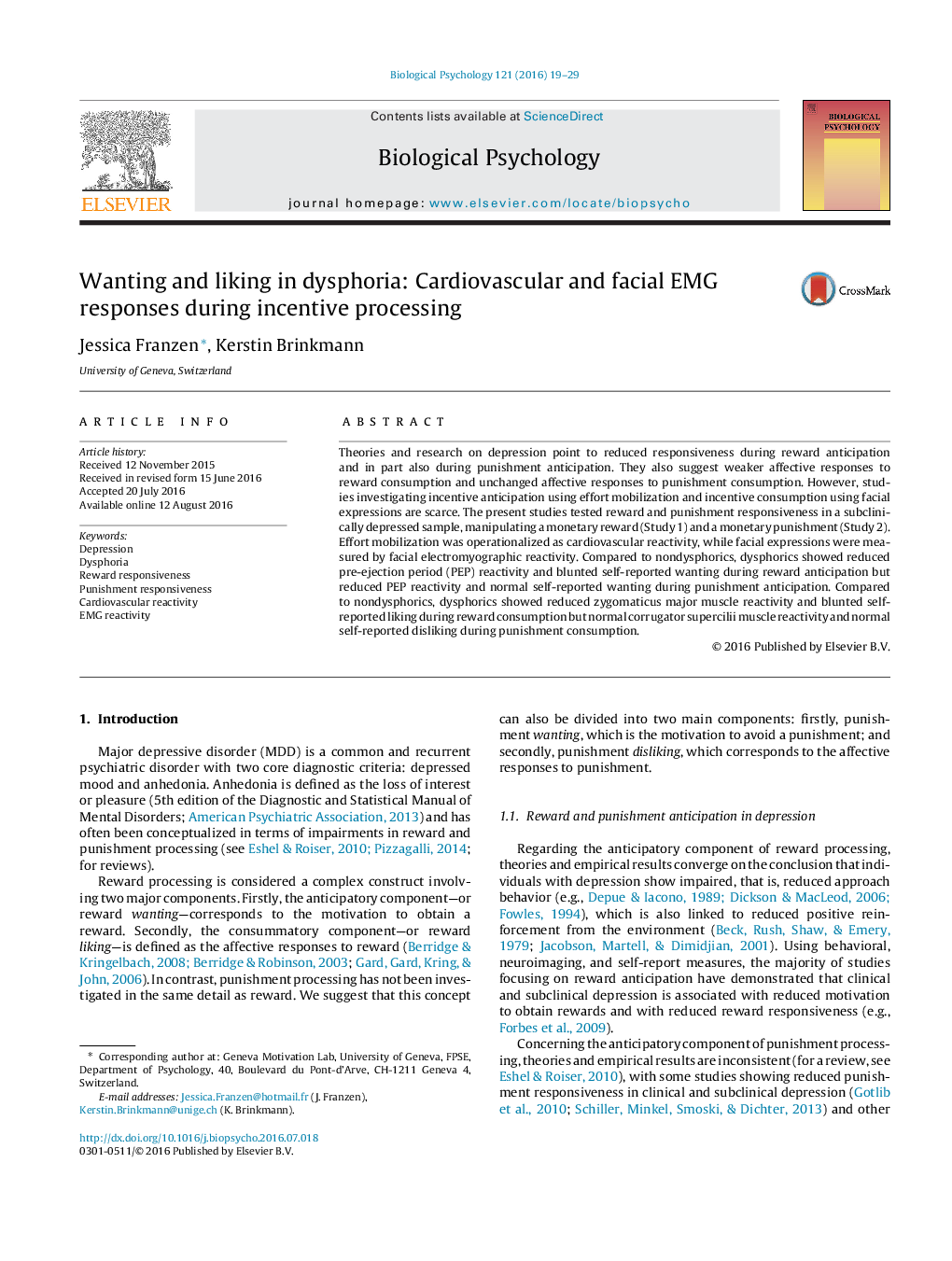| Article ID | Journal | Published Year | Pages | File Type |
|---|---|---|---|---|
| 5040436 | Biological Psychology | 2016 | 11 Pages |
•Compared to nondysphorics, dysphorics show reduced pre-ejection period reactivity during reward anticipation.•Compared to nondysphorics, dysphorics show reduced pre-ejection period reactivity during punishment anticipation.•Compared to nondysphorics, dysphorics show reduced zygomaticus major muscle reactivity during reward consumption.•Compared to nondysphorics, dysphorics show similar corrugator supercilii muscle reactivity during punishment consumption.
Theories and research on depression point to reduced responsiveness during reward anticipation and in part also during punishment anticipation. They also suggest weaker affective responses to reward consumption and unchanged affective responses to punishment consumption. However, studies investigating incentive anticipation using effort mobilization and incentive consumption using facial expressions are scarce. The present studies tested reward and punishment responsiveness in a subclinically depressed sample, manipulating a monetary reward (Study 1) and a monetary punishment (Study 2). Effort mobilization was operationalized as cardiovascular reactivity, while facial expressions were measured by facial electromyographic reactivity. Compared to nondysphorics, dysphorics showed reduced pre-ejection period (PEP) reactivity and blunted self-reported wanting during reward anticipation but reduced PEP reactivity and normal self-reported wanting during punishment anticipation. Compared to nondysphorics, dysphorics showed reduced zygomaticus major muscle reactivity and blunted self-reported liking during reward consumption but normal corrugator supercilii muscle reactivity and normal self-reported disliking during punishment consumption.
